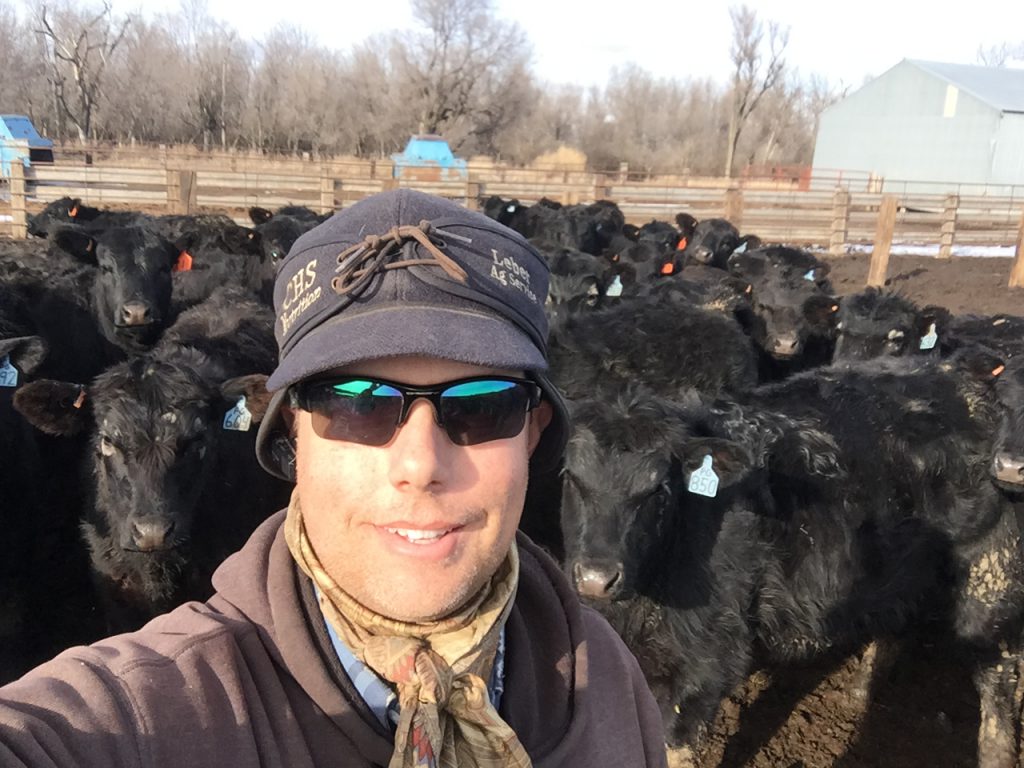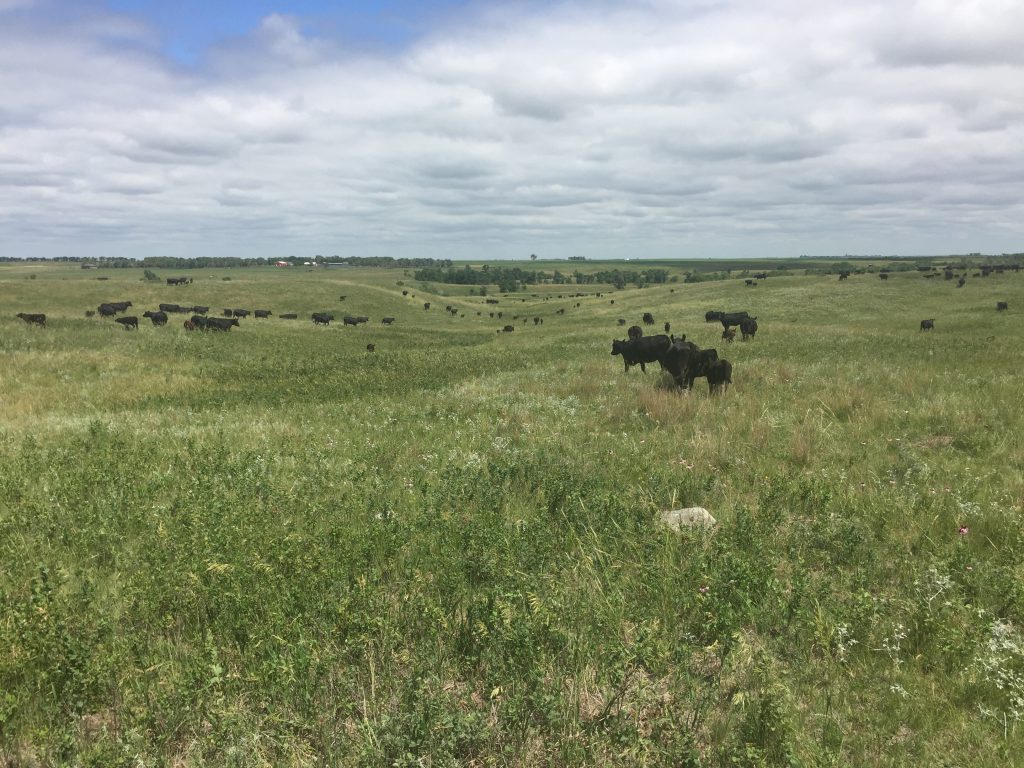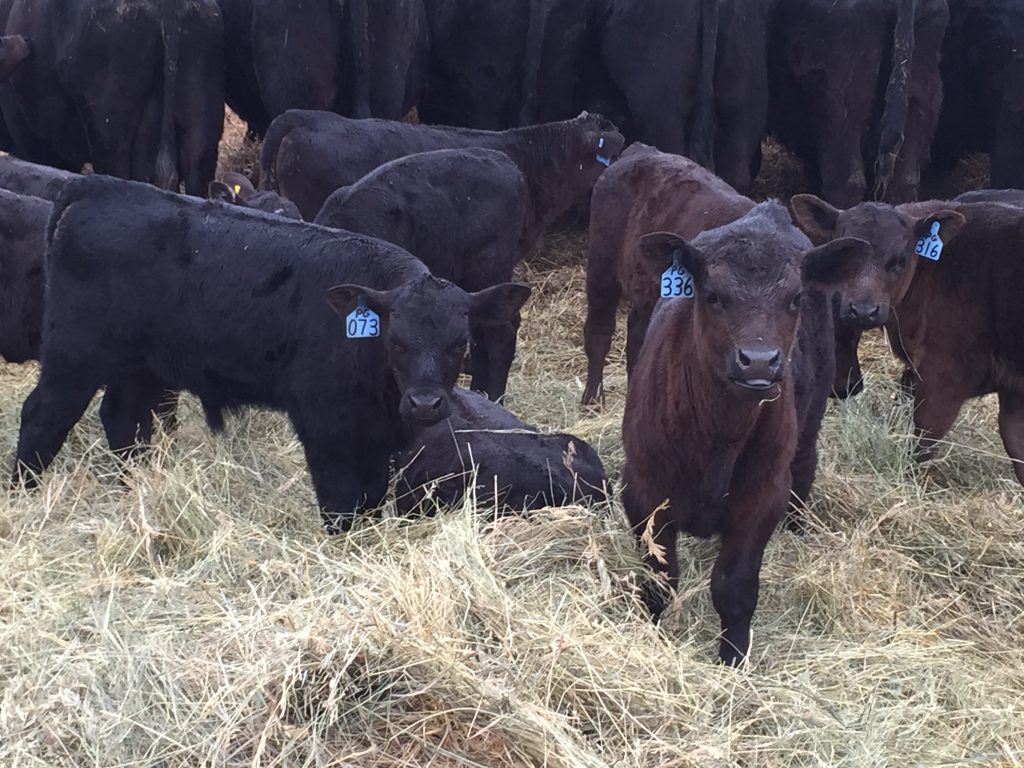Following the Calves: Rapid Change
A move. Three kids to transition to a new school. Taking his wife hours from her family and career.
These were not small considerations.
When Troy Hadrick contemplated managing his family’s commercial Angus herd near Faulkton, South Dakota, change was a given. It was even part of the allure.
“One of the things I wanted to do was go for high carcass quality and try and capture some of those premiums,” Troy says, channeling his South Dakota State University meats judging experience. “When those cattle are hanging on the rail, it really doesn’t take much more effort to go CAB and Prime than it does to only have ones that don’t, and in the end, we get paid more for it.”
In 2010, the family made the move as he started making herd plans, and I met Troy and wife Stacy for the first time, judging the National Beef Ambassador competition together.
I knew something of them from their Advocates for Ag work, but in-person I could tell they were eager learners and educators. Still today, “agvocacy” work takes them off the ranch a dozen or more times a year, and recently Troy shared his genetic progress with fellow producers.
But those animals at home demand attention.
“I didn’t want the cows to be the thing that we got to when we weren’t busy farming, because I don’t think you’re going to fully realize the potential of your cow herd if they’re all kind of the afterthought,” he says.
Over the next two years, the older generation transferred the diversified business to Troy and his two cousins (who head up the machinery and farming), so the rancher was in the driver’s seat.
The year was 2012, one many remember as the driest on record, a landmark drought.
“You get all excited for that first year, and you feel like you’re ready to go out and start the world on fire, and then, when it forgets to rain, it changes all your plans,” Troy recalls.
The cattleman wrote specific goals, including “freeing up feed base” by decreasing cow size and improving calf marketing through retained ownership.
“We had to get lean pretty fast,” Troy says, noting deep culling. Selection for cow type was set. Getting a baseline on how his cattle were doing? That would have to wait.
“We didn’t have a measuring stick,” Troy laments, but that didn’t delay the mission to improve.
“The idea of expansion as the key to success didn’t look very promising to me,” he says. In the era of $7/bushel corn and expensive land, the idea of “let’s get bigger” was quickly replaced by “let’s get better.”
Fast forward to 2016 and three years of carcass data shows dramatic improvements, from what had been 80% Choice and 30% Certified Angus Beef ® (CAB®) brand qualifiers, to 80% CAB or better, with more than 18% Prime.
He credits a strong artificial insemination (AI) program, a relationship with Irsik and Doll Feed Yard at Garden City, Kan., and GeneMax testing to point to the best possible replacements.
“I really want to get to where we have everything CAB and Prime, because that’s the way you really see the premiums start to stack up,” he says.
What, specifically, will the cattleman do to get there? Find out as I begin another round of “Following the Calves.” Next we’ll catch up on what’s been happening at the Hadrick ranch this fall.
May your bottom line be filled with black ink,
Miranda
—
P.S. Travel across the country as we follow other calves from ranch to feedyard this year. The first installment in our second round of the series takes you to veteran cattleman Glenn Cantrell in Oklahoma.
You may also like
You, Your Cows and Their Feed
Expert guidance from Dusty Abney at Cargill Animal Nutrition shares essential strategies for optimizing cattle nutrition during droughts, leading to healthier herds and increased profitability in challenging conditions.
Marketing Feeder Cattle: Begin with the End in Mind
Understanding what constitutes value takes an understanding of beef quality and yield thresholds that result in premiums and/or discounts. Generally, packers look for cattle that will garner a high quality grade and have excellent red meat yield, but realistically very few do both exceptionally well.
Kansas Ranchers Recognized for Sustainability Efforts
Kansas’ Wharton 3C Ranch thrives despite droughts, winning the CAB 2023 Sustainability award. The data-driven, quality-focused approach of first-generation ranchers, Shannon and Rusty Wharton, yields 100% CAB cattle. Their commitment to sustainability and industry collaboration sets a bright future for the cattle business.






